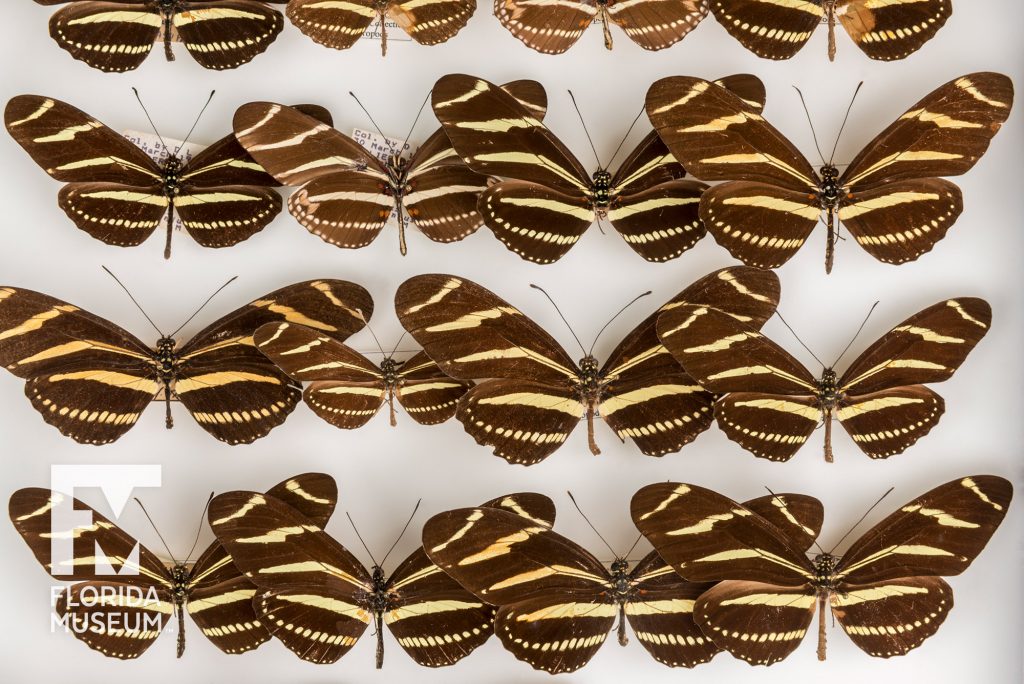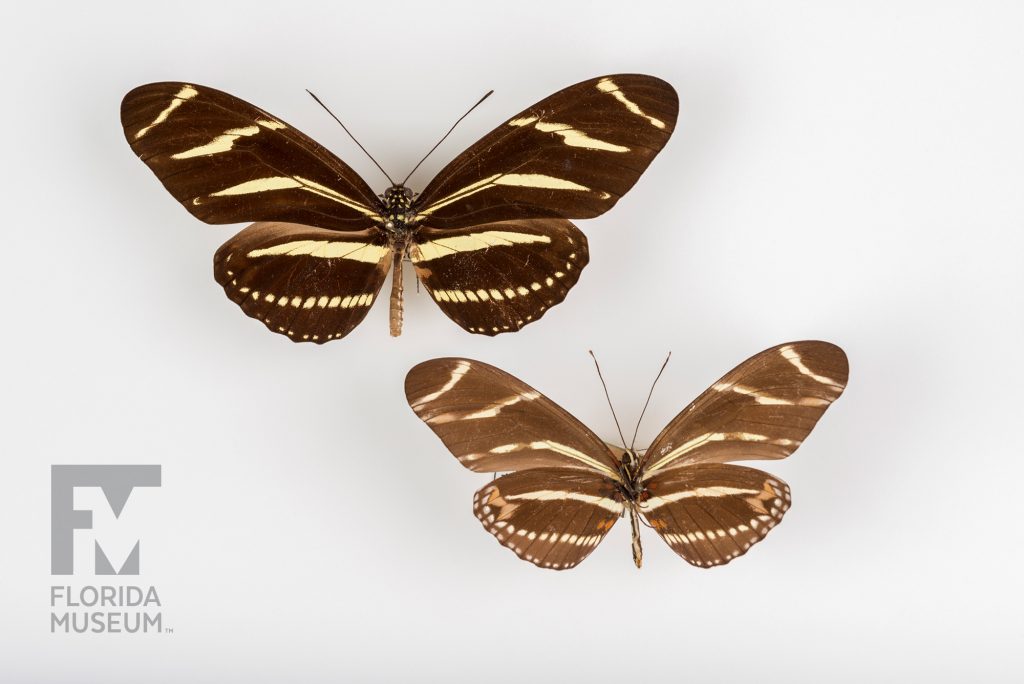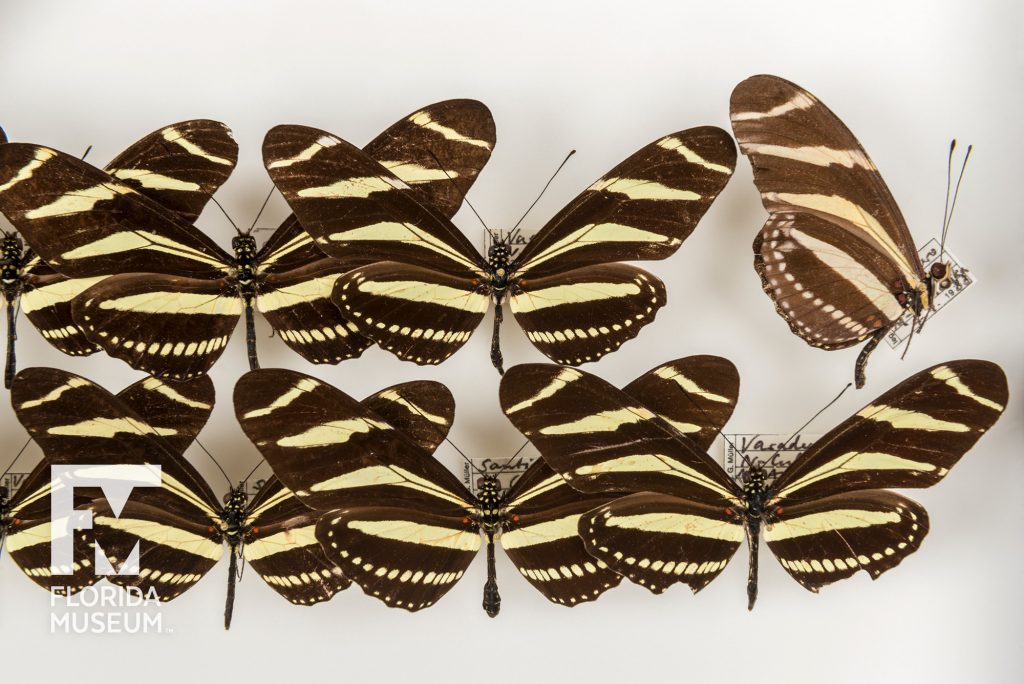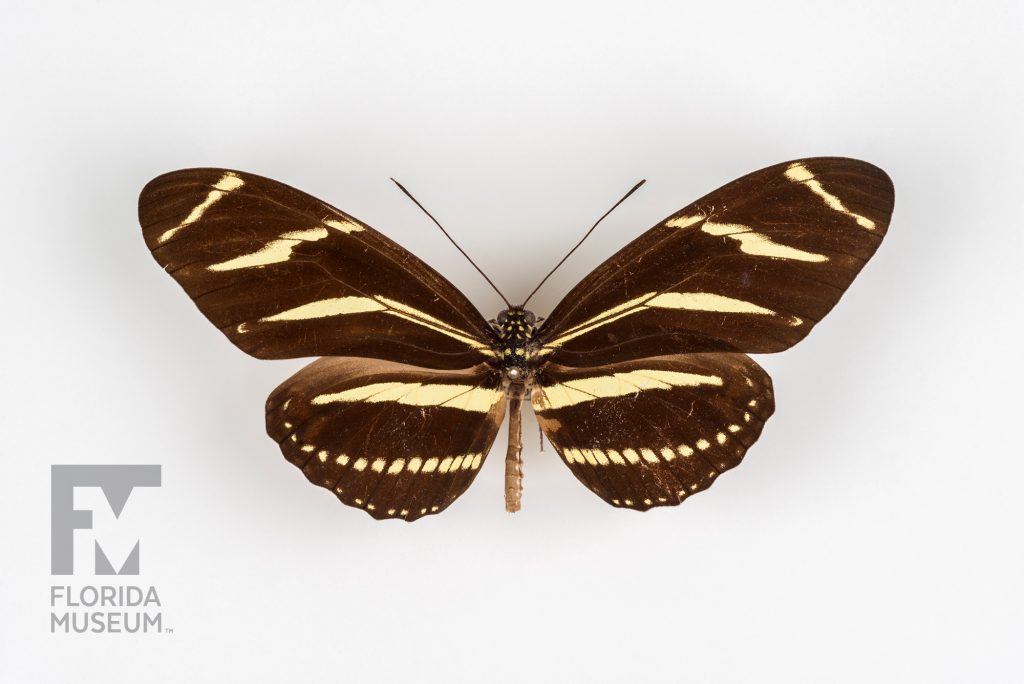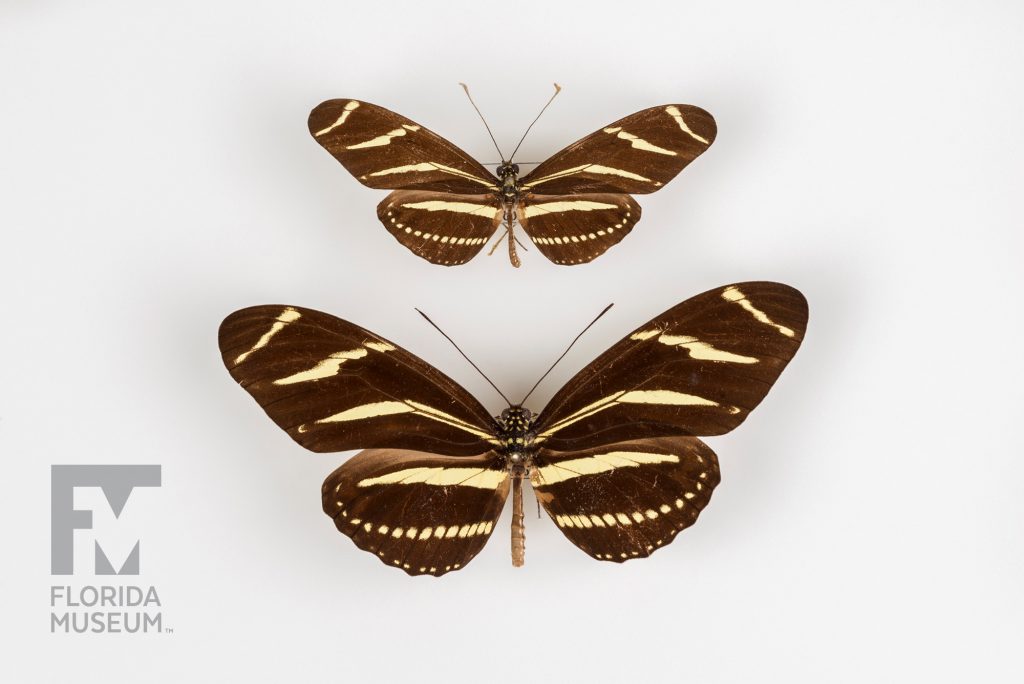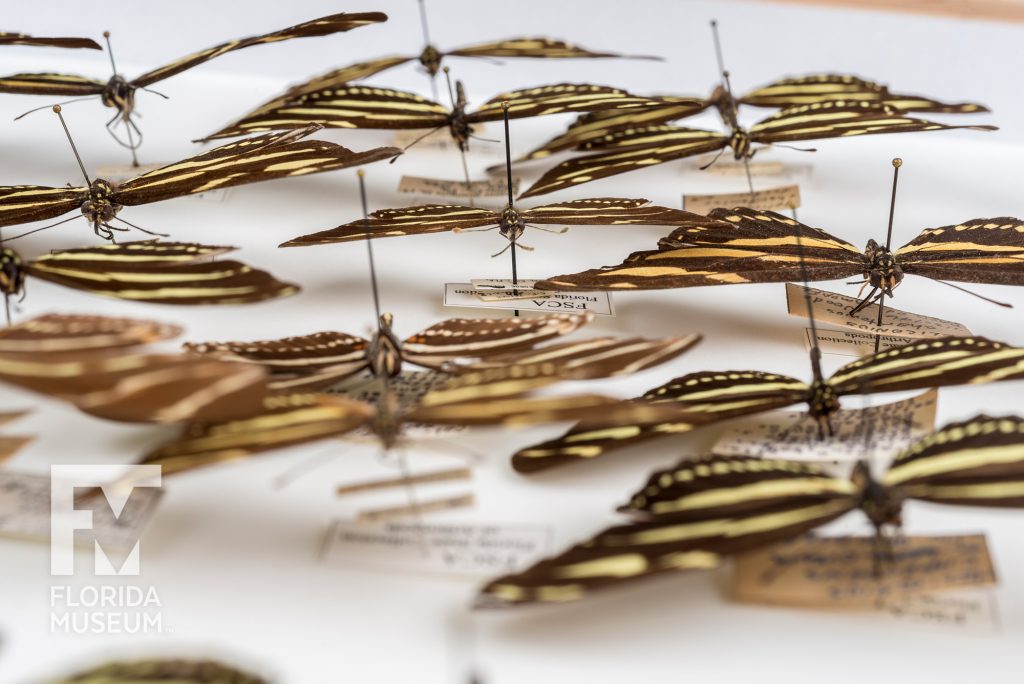Zebra Longwings live an unusually long life, and can survive more than a month as adults rather than the typical 1–2 weeks as most butterflies. This is partly because they ingest pollen as well as nectar, giving the Longwings an extra source of protein.
Summary
Zebra Longwing (Heliconius charithonia)
From Alachua Co., Florida, 2017
Florida State Butterfly
Collection
Story
Our state butterfly, Zebra Longwing, or Zebra Heliconian, is named for its striped wing pattern. This coloration is a warning to predators that the butterfly is toxic. Their toxic nature comes from chemicals called cyanogenic glycosides that taste bitter, and if ingested, are bad for one’s health. The nasty chemicals derived from the hostplant – the Passion Vine – protect caterpillars as well. The caterpillars are white with black spots and black spines and are conspicuous, because they too signal to predators, “Don’t eat me!” Caterpillars pupate on or near hostplants and the chrysalis looks like a dry leaf and is hard to find.Zebra Longwings are found from Peru in South America and as far north as Texas and Florida. Butterflies may move from Mexico to Texas, following changes in temperature. In North Florida, populations may freeze out during an unusually cold winter. In that case, the distribution of Zebra Longwings in the state may contract to just South Florida, and it takes several years for the species to repopulate the northern part of the state, including Gainesville.
Unlike most other butterflies, male Zebra Longwings mate with a female before the female has a chance to emerge from its chrysalis. So, even though the chrysalis is hard to find, male butterflies manage to do so. Once males find a chrysalis, they visit it repeatedly and perch on it. This begins way before mating happens. If a male senses through chemicals that the pupa is that of a female, it continues to return to it more and more frequently. Intruding males are fended off by an opening of the wings. Mating happens for several hours, and the female emerges during this process to expand her wings. No other males attempt to mate with this female after it has been mated, because during mating the male repellent is transferred from him to her. Despite the fact that the butterfly is one of the most common in the state of Florida, these details of its reproductive biology have been described only recently by the Florida Museum’s scientist, Dr. Andrei Sourakov.
Zebra Longwing is the only representative of this genus in the United States and is a fascinating model for education and research. It is also easy to attract to your garden: simply plant some Passion Vines and nectar plants, and swarms of these beautiful butterflies will populate your garden.
Andrei Sourakov
Collection Coordinator, McGuire Center for Lepidoptera and Biodiversity*
Florida Museum of Natural History
Read by:
Amy Hester
Volunteer Coordinator*
Florida Museum of Natural History
Additional Information
The Zebra Longwing is the official state butterfly of Florida.
Exhibit
On display Sept. 23, 2017-Jan. 7, 2018, Rare, Beautiful & Fascinating: 100 Years @FloridaMuseum celebrated the Museum’s rich history. Each Museum collection was asked to contribute its most interesting items and share the stories that make them special. Though the physical exhibit is closed, this companion website remains online, providing an opportunity to experience the Florida Museum’s most treasured specimens.
Exhibit Area: 100 Years of History
Theme: Sunshine State Symbols
 Want to see more? Explore more than 300 breathtaking color photos of plants, animals, fossils and cultural heritage materials from the Florida Museum of Natural History’s collections in the award-winning book All Things Beautiful available from the University Press of Florida.
Want to see more? Explore more than 300 breathtaking color photos of plants, animals, fossils and cultural heritage materials from the Florida Museum of Natural History’s collections in the award-winning book All Things Beautiful available from the University Press of Florida.
*This title was accurate at the time the exhibit was on display in 2017. Please visit the collection website to verify current staff and student information.
